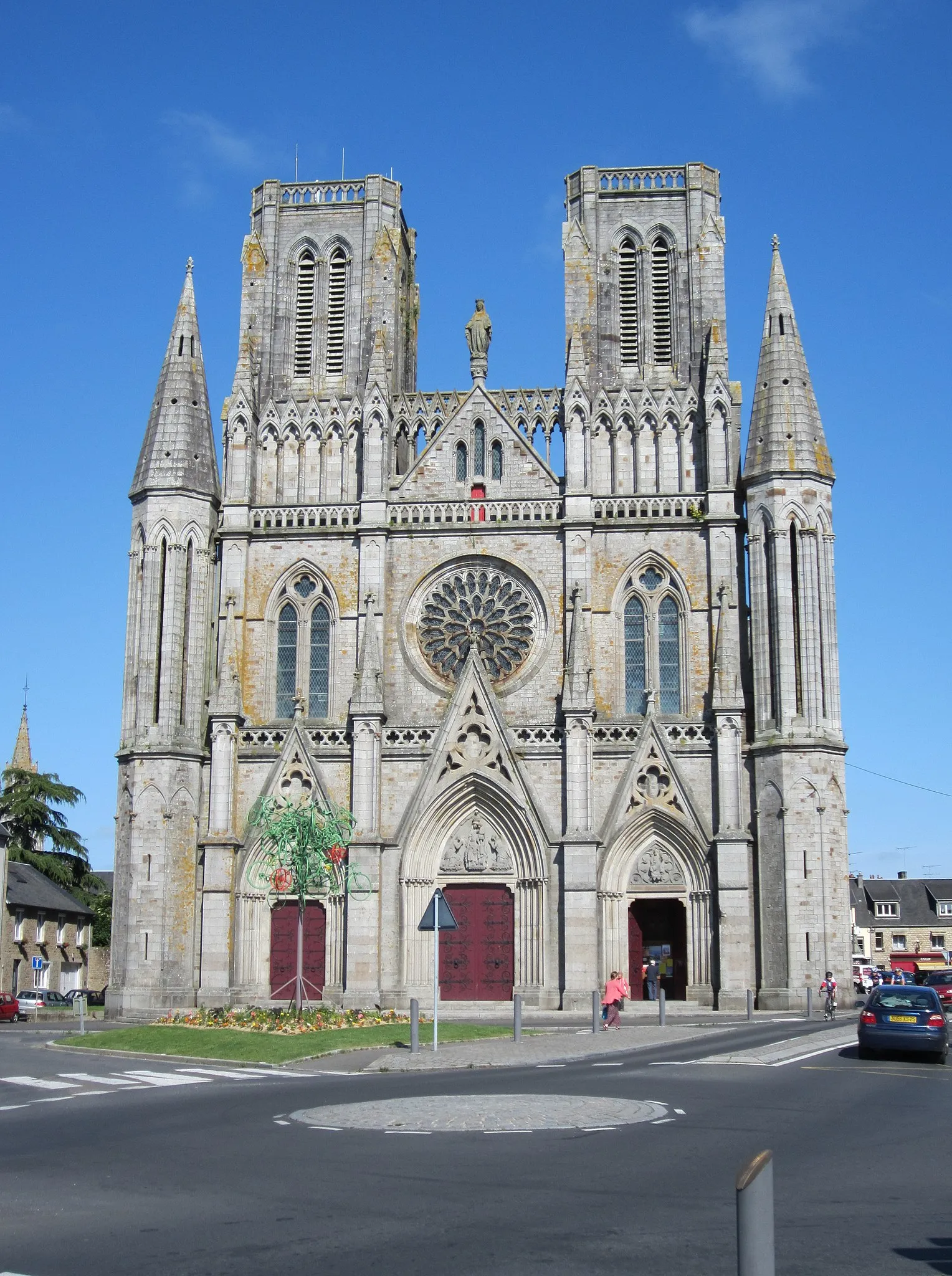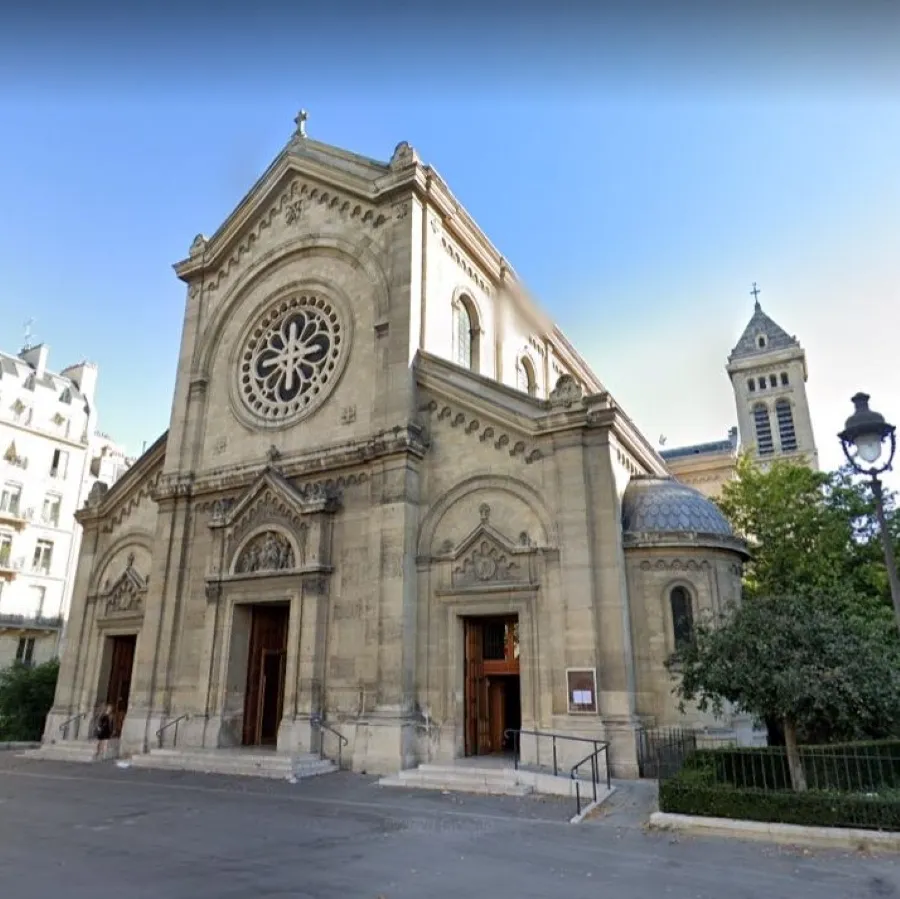
Introduction
The Notre-Dame-des-Champs church is located at 91, boulevard du Montparnasse, in the 6th arrondissement of Paris. It gives its name to the Notre-Dame-des-Champs district, in the southern part of which the church is located, and which is the 23rd administrative district of Paris.
The church belongs to the City of Paris. It is assigned to Catholic worship within the statutory framework of the law of December 9, 1905, on the separation of Churches and State and the legislation which follows.

In the beginning, a Roman temple devoted to the god Mercury occupied the exact spot where the church stands today. As France embraced Christianity, the temple underwent a re-dedication to the Blessed Virgin Mary, becoming Notre-Dame-des-Vignes. Additions by Robert II led to a dual dedication to the Virgin Mary and Saint Denis. Benedictine monks from Marmoutier Abbey transformed the church into a priory, renaming it Notre-Dame-des-Champs to honor Our Lady of the Fields.
In 1604, the Benedictines transferred the priory to Princess Catherine Gonzaga, Duchess of Orleans-Longueville, who welcomed Carmelites from Spain. This Carmelite convent became a refuge for both Louise de La Vallière and Françoise-Athénaïs de Rochechouart, Marquise de Montespan, as they withdrew from the French court and embraced religious life. The French Revolution led to the closure of the convent, and the church was subsequently destroyed. In 1802, the Carmelite Order repurchased part of the estate, constructing a small chapel dedicated to Notre-Dame-des-Champs, along with a new cloister and living quarters. The order departed in 1906.
In 1858, a temporary wooden chapel was built as a local parish. The current structure, designed by architects Paul-René-Léon Ginain, Eugène Bonté, and Léon Ginain, was constructed on an iron frame engineered by Gustave Eiffel. The foundation stone was laid on 17 March 1867, sourced from quarries in Châtillon, Hauts-de-Seine.
Gustave Eiffel’s iron framework for the church marked his initial foray into church structures, predating his well-known work on the Eiffel Tower by two decades. This innovation allowed the church to attain greater height, with fewer supporting columns and larger windows compared to earlier Parisian churches.
After an interruption caused by the Franco-Prussian War in 1870, the completed church received blessings on 31 October 1876. On 25 March 1912, Archbishop Léon-Adolphe Amette of Paris consecrated the church.

Hellmuth, Obata, & Kassabaum, Inc., the designers of the Church, gave careful attention to creating a worship space that would serve the needs of those who visit the Shrine. It was completed in 1990 and designed to meet the need for indoor worship space to accommodate the many visitors to the Shrine.
The impressive Main Shrine is situated at the base of a natural outdoor amphitheater. In addition to the permanent seating, the grassy slopes of the Amphitheatre can accommodate several thousand people. The Outdoor Altar’s graceful contour, enhanced by the talents of several artists, echoes the structural harmony and artistic integration found in Europe’s Renaissance cathedrals.
Christ the King Chapel, the Chapel of Santo Niño de Cebu, and the Rosary Courts are integrated into the Main Shrine area. A massive steel framework was built. Wet cement was sprayed over the entire structure to form a shell. Rising gracefully from the concrete shell is a 50′ concrete “M” which stands for Mary, the mother of Jesus. A 70′ spire rises from the apex of the symbolic “M” serving as a beacon guiding visitors to the magnificent setting. Three circles, representing the Holy Trinity, surmount a bronze cross. A bronze dove in downward flight is at the base of the spire, symbolizing the Holy Spirit.
The black marble altar in front of Our Lady of the Snows is the Main Altar for outdoor liturgies at the Shrine. Artist Rodney Winfield designed the large bronze crucifix, the tabernacle, and the pair of three-branched candelabras. The latticework of metal rings beside the chalice represents graces flowing to us from God. Additional rings and circles are reflected in the stonework on the first and second levels of the sanctuary, emphasizing Christ’s blessings to all who receive Him.
In the gathering space is a stunning contemporary icon of Our Lady of the Snows, presenting her Divine Son for our contemplation and our imitation. Iconographer, Basil Lefchick, followed the centuries-old rule of fasting and praying while executing the stylized images of Mary and the Baby Jesus.
Exterior
The exterior design drew inspiration from Romanesque architecture, featuring classical columns and decoration. The tympanum above the central portal, facing Boulevard du Montparnasse, is adorned with bas-relief depicting the Virgin Mary and the Infant Christ. This sculpture was crafted by Gabriel-Jules Thomas (1824-1904) and was finished in 1863. Additional works by Thomas can be seen in the Cour-Carré of the Louvre Museum, and he also created a statue of “Frankfurt” for the facade of the Musée d’Orsay when it served as a railway station.
Interior
The church’s plan was freely inspired by Romanesque architecture, and Eiffel’s iron frame enabled it to achieve greater height and interior space compared to preceding churches. The nave is flanked on both sides by rows of cruciform pillars, providing support for the rounded arches of the arcade. Adorned with classical capitals of the Ionic order, the columns extend upward to support the rounded double arches of the vault. Rows of large windows on the lower and second levels of the walls in the nave and choir fill the church with abundant light.
Art and Decoration

The most notable works of art within the church are a series of twenty-two paintings above the galleries in the nave and the choir, depicting the life of the Virgin Mary by the artist Joseph Aubert (1849-r1924). The series is notable for the careful detail of the paintings. He devoted twenty-six years to the series and traveled to Palestine during the project to carry out ethnographic research, particularly to study the costumes and daily life of women. In addition to the series, He painted a fresco over the choir with scenes of the life of the Virgin.
Grisailles
Apart from the usual paintings, the church showcases a set of fourteen grisaille paintings on enamelled copper illustrating scenes from the Biblical Way of the Cross. These artworks were created by the artist Frédéric de Courcy and were exhibited at the Paris Salon in 1879 before finding their permanent spot in the church.
Stained Glass
Inside the Chapels, there are two vibrant stained glass windows portraying events from the Christian church’s history in Paris. The window in the Chapel of the Virgin illustrates “Saint Denis, the First Bishop of Paris, visiting the Virgin in the house of Saint John in Ephesus.” The sizable stained glass windows on the upper level, along the side aisles, predominantly consist of light-colored glass to maximize the interior’s illumination for the artworks. However, the lower sections also feature intricate and colorful designs.
The Organ
The organ of the church is located over the portal at the entrance to the nave. It was built by the firm of Cavaillé-Coll in 1877. It was restored in 1973 and again in 2004.
Annual Feast Day
Feast Date : Feburary 26
The annual feast day of the Église Notre-Dame des Champs is celebrated on 26th February each year.
Mass Timing
WEEKDAY MASSES
- Monday : 12:15pm and 6:30pm
- Tuesday to Friday 07:30 am, 12:15 pm & 6:30pm
WEEKEND MASSES
- Saturday Masses : 12:15 pm, 06:30 pm
- Sunday Masses : 09:30 am, 11:10 am, 05:30 pm, 7:30pm
Church Visiting Hours
Monday to Sunday : 08:00 am to 07:30 pm
Contact Info
91 Bd du Montparnasse,
75006 Paris,
France
Phone No.
Accomodations
How to reach the Sanctuary
Airway
The nearest major airport to the Eglise notre-dame des champs is Paris Charles De Gaulle Airport (CDG / LFPG). This airport has international and domestic flights from Paris, France. which is 23km away from the northeast of Paris.
Railway
The nearest railway station to the Eglise notre-dame des champs is Notre-dame des champs , Paris, which is 1km away from the Church.







